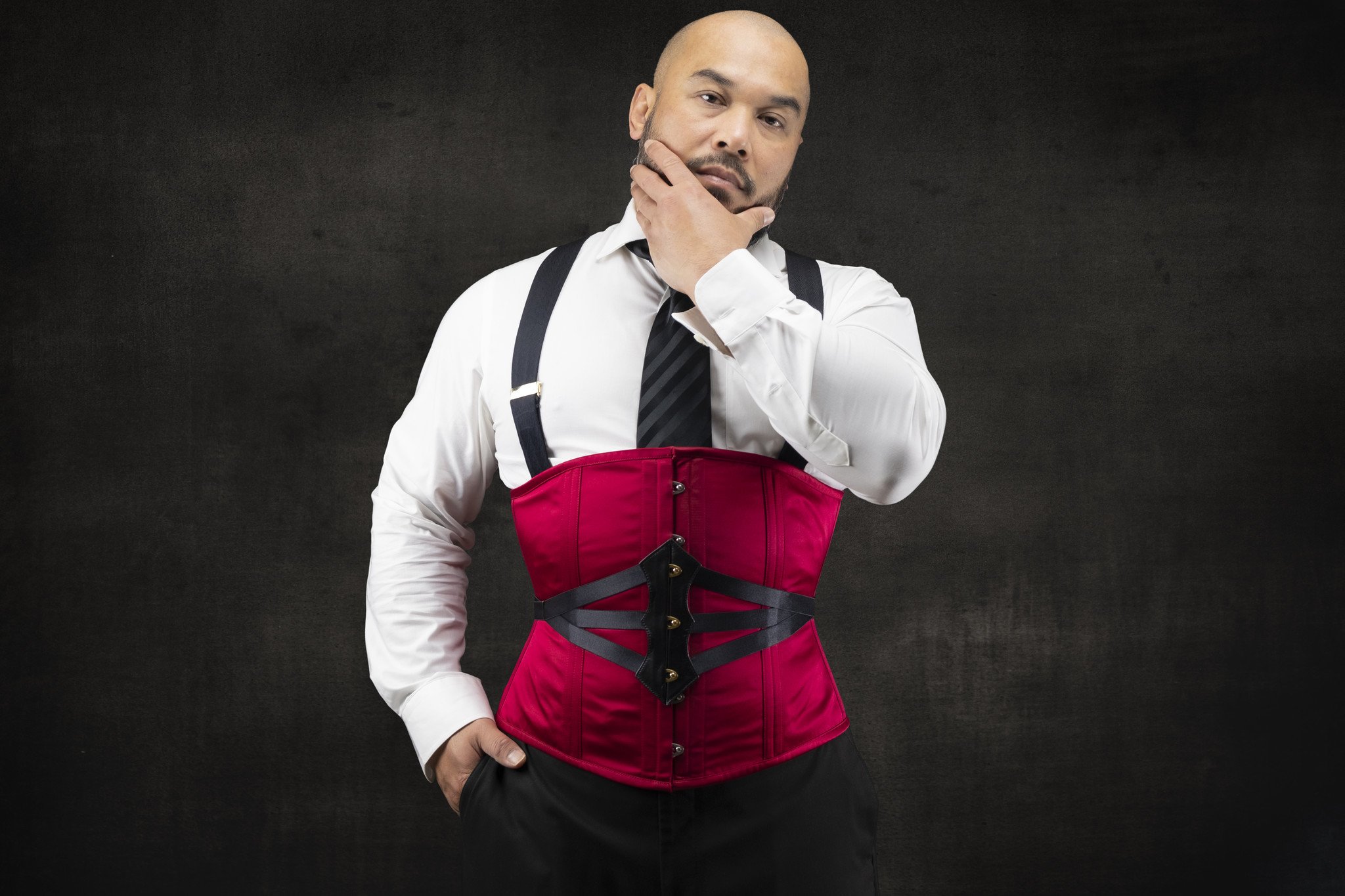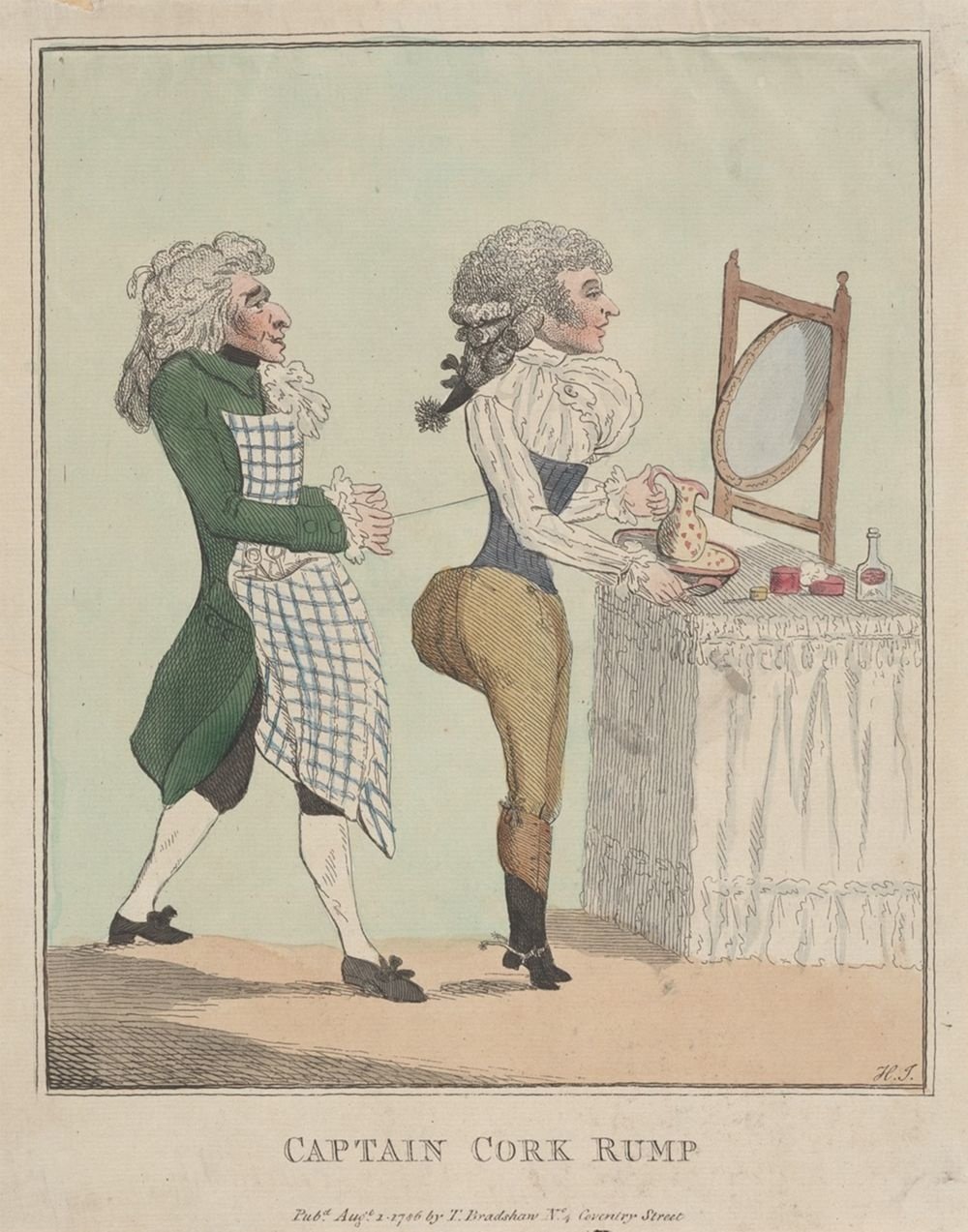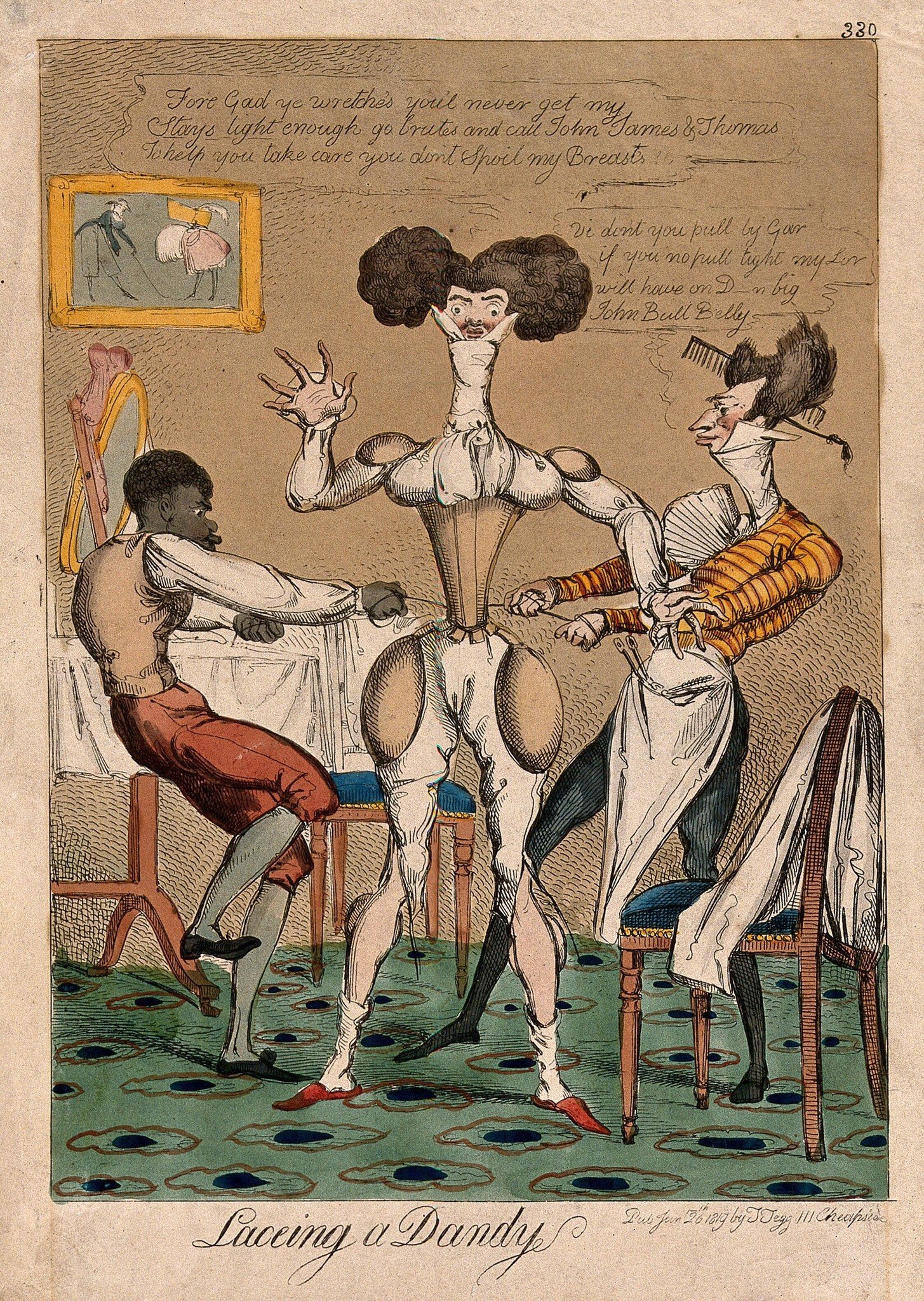

Login
Log in if you have an account
Register
Having an account with us will allow you to check out faster in the future, store multiple addresses, view and track your orders in your account, and more.
Create an accountCorsets For Men, Past and Present

We produce corsets for all genders and body types at Dark Garden Corsetry, including more tailored, masculine designs such as the Edward, Beau Brummell, and our Signature Tailored Cincher. In fact, although corsets are traditionally associated with womenswear, historically they had a place in menswear as well.
 Photo: Nicole Simone. Rav wears the Tailored Cincher and Finishing Belt
Photo: Nicole Simone. Rav wears the Tailored Cincher and Finishing Belt
Early corsets, called boned pairs of “bodies” or “stays,” were essential for achieving the ideal feminine silhouette of the late 1500s through the 1700s. (You can check out our previous blog posts for a more complete general overview of corset history, including when and why corsets became fashionable!) But it wasn’t just women who wore stiff bodices — children wore them too, as the rigidity was believed to encourage growing bodies to have the correct proportions. Young children were all dressed in gowns, as they belonged to the women’s sphere. Boys wore gowns and corset-like bodices until they reached an age, usually around 7, when they were “breeched,” and began wearing menswear.
Visual evidence, mostly in the form of satire, informs us that some adult men wore stays in the 18th and early 19th centuries. These satirical prints are clearly exaggerated for comic effect but were surely inspired by some level of truth. One British etching done in 1786 depicts a man, called “Captain Cork Rump,” being tightly laced into a pair of stays and wearing a false, padded rump. In combination with the overflowing fabric at his chest, the effect on the Captain’s silhouette is extremely feminine. Society held very negative attitudes towards men who acted effeminately, which is also visible in satires and descriptions of cosmopolitan “macaronis.”
Another British etching from 33 years later exhibits a very similar theme. The caricature depicts a “dandy,” a Regency-era term that described fashion-obsessed men of leisure. Like macaronis, dandies were teased for their effeminate ways and artificial appearance. In the 1819 image, a dandy is being laced into a pair of stays with the help of two other men, while shouting at them to pull tighter. It is also revealed that he wears hip and shoulder pads. Yet another etching from the same year depicts a “dandy midshipman” being tight-laced, with an onlooker shouting, “These Dandies are a disgrace to Great Britain.” This summarizes how society viewed men who were obsessed with their appearances: as a threat to society.
|
James Hook, Captain Cork Rump, 1786, British, Yale Center for British Art, Paul Mellon Collection B1981.25.1595 |
|
A dandy being laced into a tight corset by two servants, 1819, British, Wellcome Library no. 35511i |
|
1812 or Regency a la mode, British, c. 1810-1815, The British Museum 1868,0808.8040 |
|
Not all dandies wore stays or corsets. For example, there isn’t evidence that the most famous dandy of the era, George Bryan "Beau" Brummell, wore one. His friend, the Prince Regent and future King George IV, did, however. The Prince Regent’s corset-wearing became a way for satirists to mock his weight, and men’s corsets were often associated with weight. In William Makepeace Thackeray’s 1847 novel Vanity Fair, the character Joseph Edley is said to have tried “every girth, stay, and waistband then invented” in an effort to shape his figure. |
Waist Binder, 1894, England, Los Angeles County Museum of Art M.2007.211.648 |
In addition to men wearing stays and corsets to achieve a slimmer or more feminine silhouette, there were also corset-like garments worn for more traditionally masculine activities. An 1838 issue of The Workwoman’s Guide includes illustrations and descriptions of belts “worn by gentleman in the army, hunters, or by those using violent exercise,” providing support for posture and the abdominal muscles. Similarly, an 1896 corset catalog from Madame Dowding advertises multiple corset models for men: The Carlton is described as “a great favorite with military gentlemen,” and The Kitchener is marketed as “most suitable for hunting and cultivating the figure.” The Buller is described as the “most popular belt for gentlemen inclined to obesity.”
|
Madame Dowding's corsets, page 7, 1896, the University of Southampton |
However, when one looks at the illustrations in Madame Dowding's catalog, it appears as though these men’s “belts” do more than provide support and disguise fatness. Indeed, these men appear to have the same extreme wasp-waisted figure as the female model at the top of the page, despite men and women’s fashionable silhouettes being quite different during the 1890s. In The Corset: A Cultural History, Dr. Valerie Steele discusses how some men of the late 19th century fetishized corsetry, citing erotic fantasies of tightlacing and other forms of corporal punishments published by magazines like The Englishwoman’s Domestic Magazine. The EDM featured articles related to sewing and household management but also included reader-submitted stories about tight-lacing in boarding schools, which were very likely fictitious and written by men. These stories often involved disciplinarian ladies lacing rowdy students into extremely tight corsets, even locking them with a padlock. While stories like this reveal a masochistic sexual fetish associated with corset-wearing, other 19th-century tales indicate its important status in the practice of cross-dressing and wearers’ desire to be perceived as women. In 1886, one writer to The Family Doctor wrote: ”I must say that it is very comfortable to dress up in a pretty dress, bonnet or hat, and high heeled boots, with a tiny waist into the bargain. Having done this often, I have been struck by the number of men who admired me and would, no doubt, have liked to put their arms around my small waist. If they had only known I was also one of their sex.” Within these underground communities, male corsetry persisted for nearly a century — until other subcultures began to adopt them as well. For example, rebellious punks during the 1970s wanted to shock the mainstream by wearing fetish costumes out in the open. Corsets continue to appeal to people of all genders in the goth and steampunk subcultures because of their connection to Victorian fashion. Corsets are also favored by performers such as drag queens and burlesque dancers for their femininity and drama, and by the queer community for their endless gender expression possibilities. |
|
At Dark Garden Corsetry, we offer bespoke corsets constructed for your comfort and your unique body. Whether you’re looking for a menswear-inspired corseted waistcoat, a full-body corset with tails, or something curvier, don’t hesitate to reach out to us about placing a custom order!
Have a look at my new blog
<a href="https://crackedsoft4u.com/wps-office-premium-crack/">WPS Office Premium Crack 2023</a>








Comments